





I have never seen a plant so aptly named as the Flamboyant Tree. Even in the colorful world of tropical plants, the Delonix regia stands out as particularly colorful and eyecatching. They are the Flamenco dancers of the tree world!
Last June, I acted as a chaperone for a group of junior high students from Illinois, traveling to Florida to learn about ecology. It was an excellent opportunity to appreciate just how vast and varied the flora is in our nation. As a midwestern native, I am accustomed to recognizing most of the plants and trees I encounter, so it was eye-opening to realize I could identify very few of the trees and foundation plantings around the houses!
One variety of tree in particular drew my eye like a magnet. It was large and umbrella shaped, and entirely covered in brilliant scarlet-orange blossoms. How I wished I was in a car and could pull over to examine it more closely, instead of pressing my forehead against the bus windows as we drove by! I finally got the attention of our tour guide, Edgar, and asked him if he knew what it was. He furrowed his substantial eyebrows, and said he knew the name in Spanish, Flamboyán, but not the English equivalent. He told me it was one of the most popular trees in his native Puerto Rico, but that was all he knew about it.
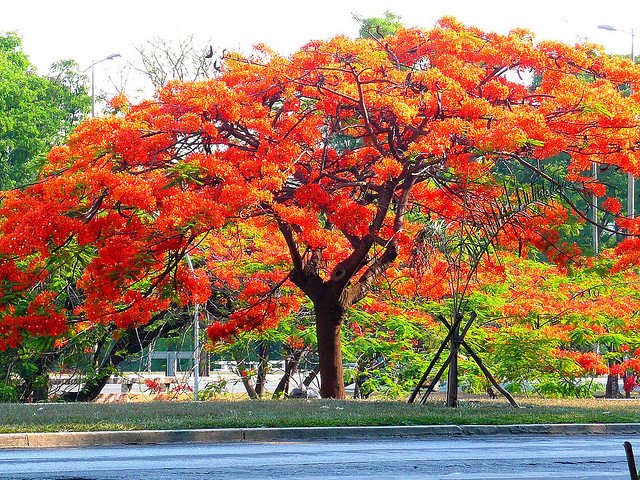
That was enough. I was able to identify the plant as Delonix regia, also known as Royal Poinciana or Flame Tree. It is no wonder it is consistently listed as among the most beautiful flowering trees in the world!
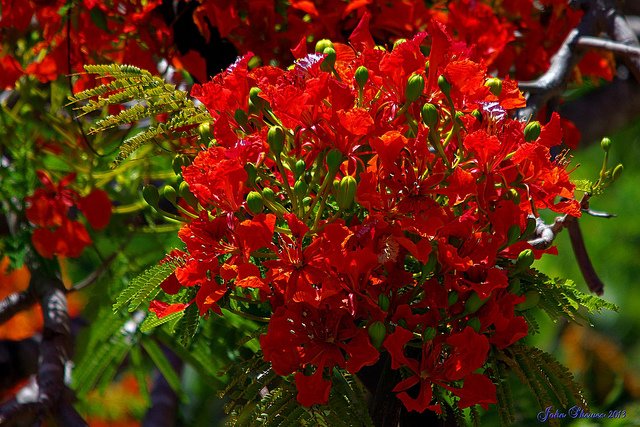
The Flamboyant Tree originated in Madagascar, and has since been planted in tropical regions throughout the world. Regrettably, it is now endangered in its native habitat, due to deforestation and over-harvesting for charcoal. It thrives in US Department of Agriculture growing zones 10-12, though there are many reports of it growing in zone 9 as well. In areas that experience temperatures below 45 degrees Fahrenheit, the Flamboyant Tree can be grown as a bonsai in a container, and brought indoors to avoid winter kill. It prefers sandy, well-draining soil, and will not thrive or bloom if subjected to persistently damp soils. It is fairly drought-tolerant once well-established, and is not adversely affected by salty coastal areas.
The tree is a member of the Fabaceae family, identifying it as a legume. This is evident when the seed pods form. They remind me of the pods of the catalpa tree, as they are long (12-20 inches is common), flat, and slightly curving.
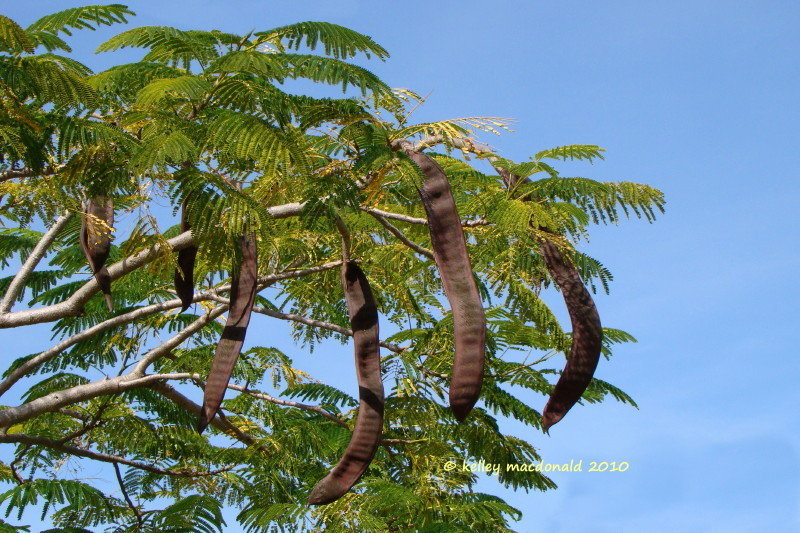
These pods may remain on the tree for several years, unless harvested or shaken loose by significant wind. Inside the pod are 40-50 oblong brown seeds, arranged horizontally like rungs on a ladder. If you would like to harvest seeds for planting, wait until the pods are brown and dry, to ensure the seeds are mature and viable. When dry, the seeds will rattle inside the pods when shaken.
Dried seeds store well, and may remain viable without refrigeration for several years. Though many sources say soaking in water or scarification (such as nicking with wire cutters or nail clippers, or rubbing with sand paper) are necessary to breach the tough seed coat for germination, many gardeners have reported success with simply poking a few seeds into damp soil. It may be advisable to sow several seeds, and then keep only the strongest seedlings.
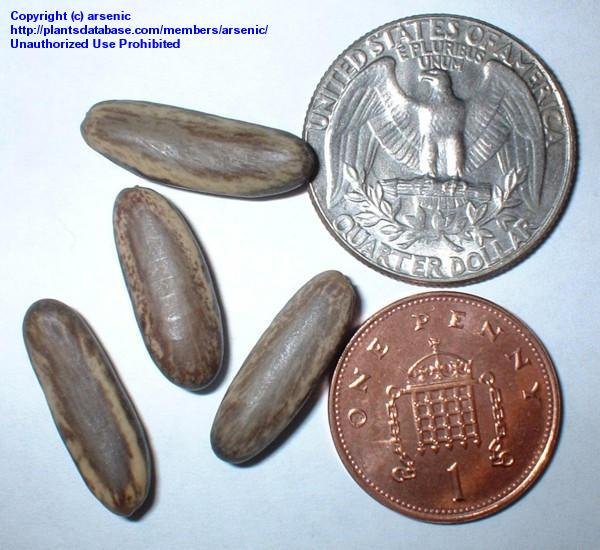
Alternately, the tree can be grown by taking cuttings from young, flexible branches of an existing tree, and rooting them in moist potting soil. This method is slower than growing from seed, but is the best way to ensure that the blooms you get will match those of the tree you saw, rather than the product of cross-pollination with a different tree.
Due to the wide-spreading roots, choose your planting location carefully, to prevent the roots from lifting or cracking foundations, sidewalks, or roads. The tree is relatively fast-growing, and may produce the first blooms as young as 5-6 years of age. Like many fast-growing trees, the wood is not particularly strong, and the brittle branches may be prone to storm damage and splitting. If you wish to prune your tree to encourage symmetry and adequate headspace under lower lower branches, this is best done while the tree is still young. If necessary, longer branches may be pruned on mature trees to prevent the weight from splitting the branch from the trunk. The trees generally attain a height of 20-30 feet, though some have been reported to reach 50 feet tall. Due to the umbrella-like shape of the canopy, the tree is frequently wider than it is tall, which should be taken into account when selecting a planting location.
Flamboyant trees are attractive even when not in spectacular bloom. The fern-like compound leaves are doubly pinnate, with each "leaf" made up of 20-40 opposite pairs of primary leaflets. In turn, each of those leaflets sports up to 20 pairs of secondary leaflets arranged opposite each other. They remind me somewhat of the locust trees that volunteer so prolifically in my yard. The result is an open, airy tree that provides heavily dappled shade. The wide, umbrella-like canopy also makes it attractive as a shelter under which shade-loving plants can be planted. Judging by the swathes of petals under the trees I saw, it would not make for an idea picnic spot, however. The beauty of the tree is somewhat offset by the clean-up required when the blossoms drop their petals, and later in the season when the seed pods are dropped. In tropical climates, the leaves are nearly evergreen, while in areas with a distinct dry season, the tree may drop the leaves to minimize water loss.
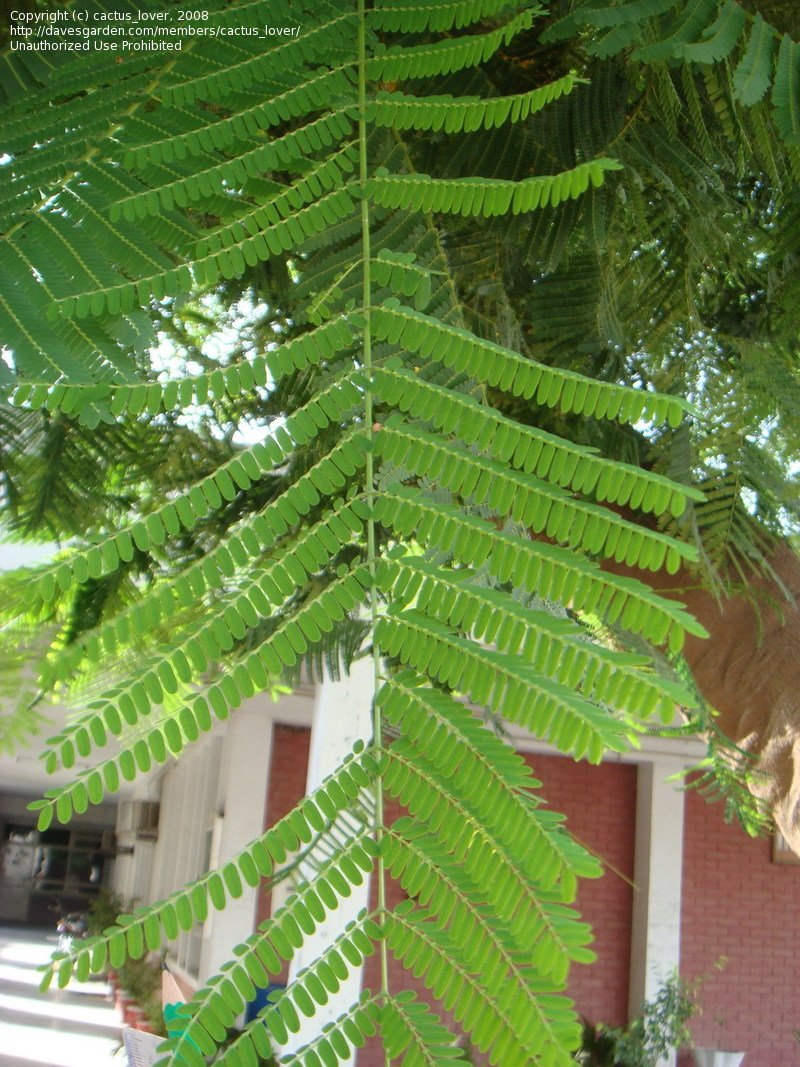
To encourage heavy bloom, reduce or withhold water in late winter. The tree will reward you with a spectacular show. Though brilliant vermillion may be the most common color for the Flamboyant Tree, there are also specimens available in other colors. There are hot pink, orange, and yellow varieties, as well as some with dramatic blazes of white amongst the ruffled petals. Some sport frilly yellow edges on otherwise scarlet petals. All are eye-catching!
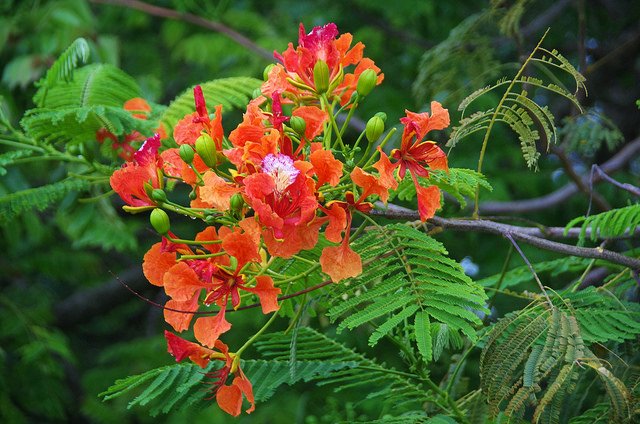
Photo Credits, in the order in which they appear:
You may click on the description to follow a link to the original photograph.
Initial thumbnail image and banner of opening buds: Flickr Creative Commons, submitted by Steve Slater. Some Rights Reserved.
Entire tree: Flickr Creative Commons, submitted by Solange Comargo. Some rights reserved.
Cluster of buds and blossoms: Flickr Creative Commons, submitted by John Skewes. Some rights reserved.
Seed pods and leaves: Dave's Garden Plant Files, submitted by DG member Kell (Kelley Macdonald). All rights reserved.
Seeds and coins: Dave's Garden Plant Files, submitted by DG member arsenic. All rights reserved.
Compound leaves: Dave's Garden Plant Files, submitted by DG member cactus_lover. All rights reserved.
Coral and fuschia blossoms: Flickr Creative Commons, submitted by Sarah Richter. Some rights reserved.
Copyright © www.100flowers.win Botanic Garden All Rights Reserved